Hades
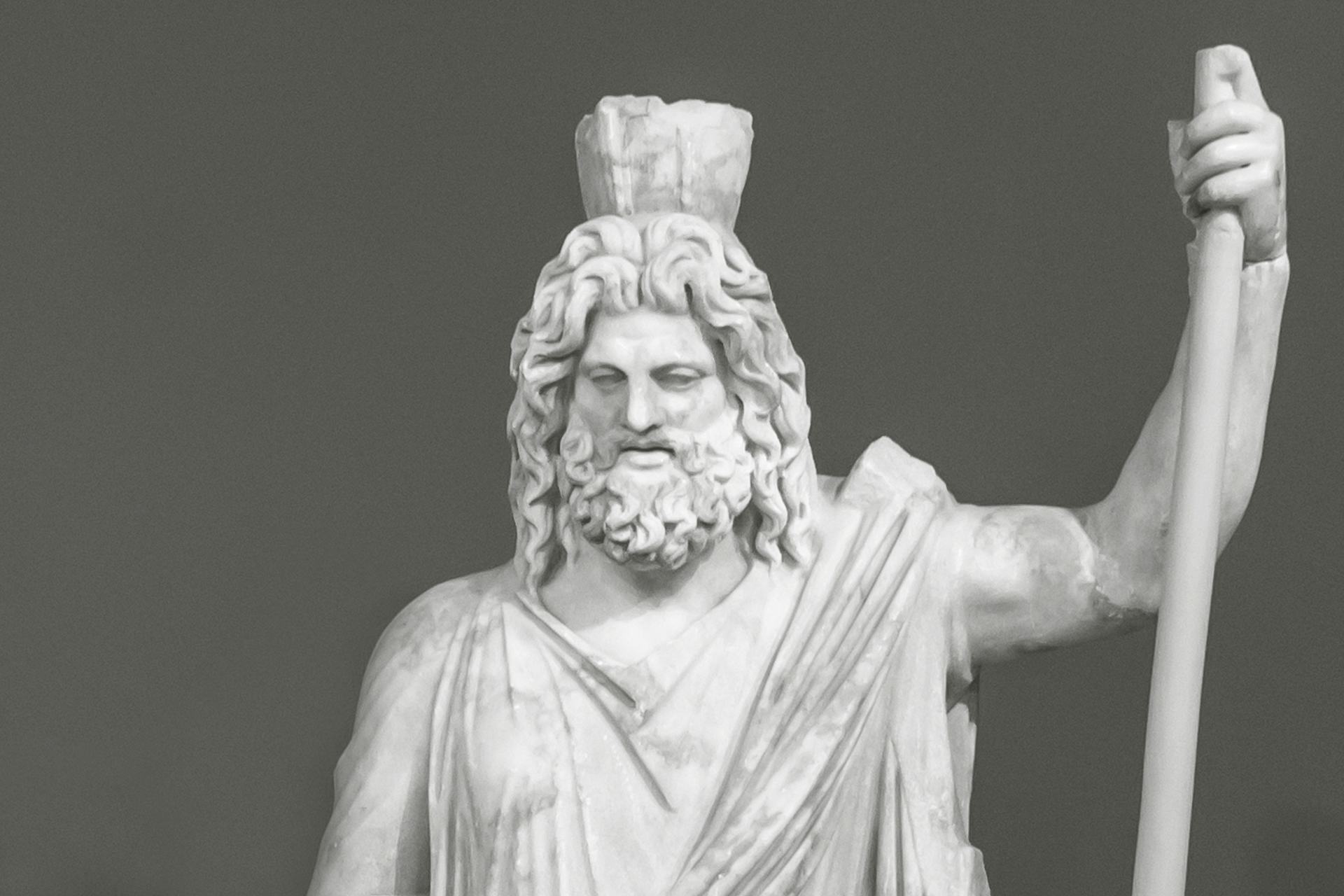
Overview
One of the most dreaded and fearsome deities that Greek mythology had to offer, Hades was king of the Underworld (also called Hades) and ruler of the dead. He was a shadowy figure, both literally and metaphorically, thanks in part to a helmet of invisibility fashioned for him by Hephaestus. The only child of Cronus and Rhea who did not inhabit Mount Olympus, Hades lived alone in a dark palace within the Underworld, a subterranean region of mist and gloom.
Hades was an unusually solitary figure and seldom took part in the feuds that constantly occupied other Olympian deities. Despite his distance from mythological drama (or perhaps because of it), Hades was universally dreaded by the Greeks, who were afraid to even utter his name.
Etymology
The earliest documented version of the name “Hades” was Aïdēs (Ἀΐδης), used in the Homeric epics the Iliad and the Odyssey (eighth century BCE). The name had evolved into its more familiar form, Hades (Ἅιδης), by the Classical period (ca. 490–323 BCE).
In antiquity, Hades’ name was generally interpreted as meaning “the unseen” or “the invisible one.” This is a rare case where the original, folk etymology seems to have been correct: modern scholars have traced the name “Hades” to the Proto-Indo-European word *ṇ-uid-, meaning “unseen.”[1]
Pronunciation
English
Greek
Hades Ἅιδης Phonetic
IPA
[HEY-deez] /ˈheɪ diz/
Other Names
The earliest attested form of the name, used in Homeric and Ionic Greek, was Aïdēs. Another common poetic alternative was Aidoneus. By the Classical period (ca. 490–323 BCE), the god’s name had evolved into Hades.
Fearful of speaking the name of the god of death, the Greeks took to calling Hades by the alternative euphemistic name Plouton, meaning “wealthy.” This other name presumably reflected the fact that the Greeks’ riches, such as crops and precious metals, came from below the earth. The name Plouton was inherited by the Romans, whose god Pluto possessed the same characteristics as Hades.
Epithets
Hades was known by several epithets, including agēsandros and agesilaos (meaning “he who leads people away”), polysēmantōr and polydegmōn (“ruler of many” or “host of many”), klymenos (“the notorious”), and eubuleus (“giver of good advice”).
Attributes
Hades was, first and foremost, the god of death: it was he who ruled the Underworld, and indeed, his name was synonymous with the Underworld. But Hades was also a god of wealth and fertility since good things like crops and precious metals came to mortals from his underground realm.
Hades was regarded as a dark, merciless god. Perhaps as an extension of his name, usually thought to mean “the unseen one,” Hades was said to possess a helmet of invisibility. In one famous myth, he let the hero Perseus borrow this helmet so that he could sneak up on and kill Medusa.
Hades was often represented riding a chariot driven by pitch-black horses. Among the other attributes of Hades were a scepter, the keys to the Underworld, a cornucopia, and Cerberus, the three-headed guard dog of the dead.
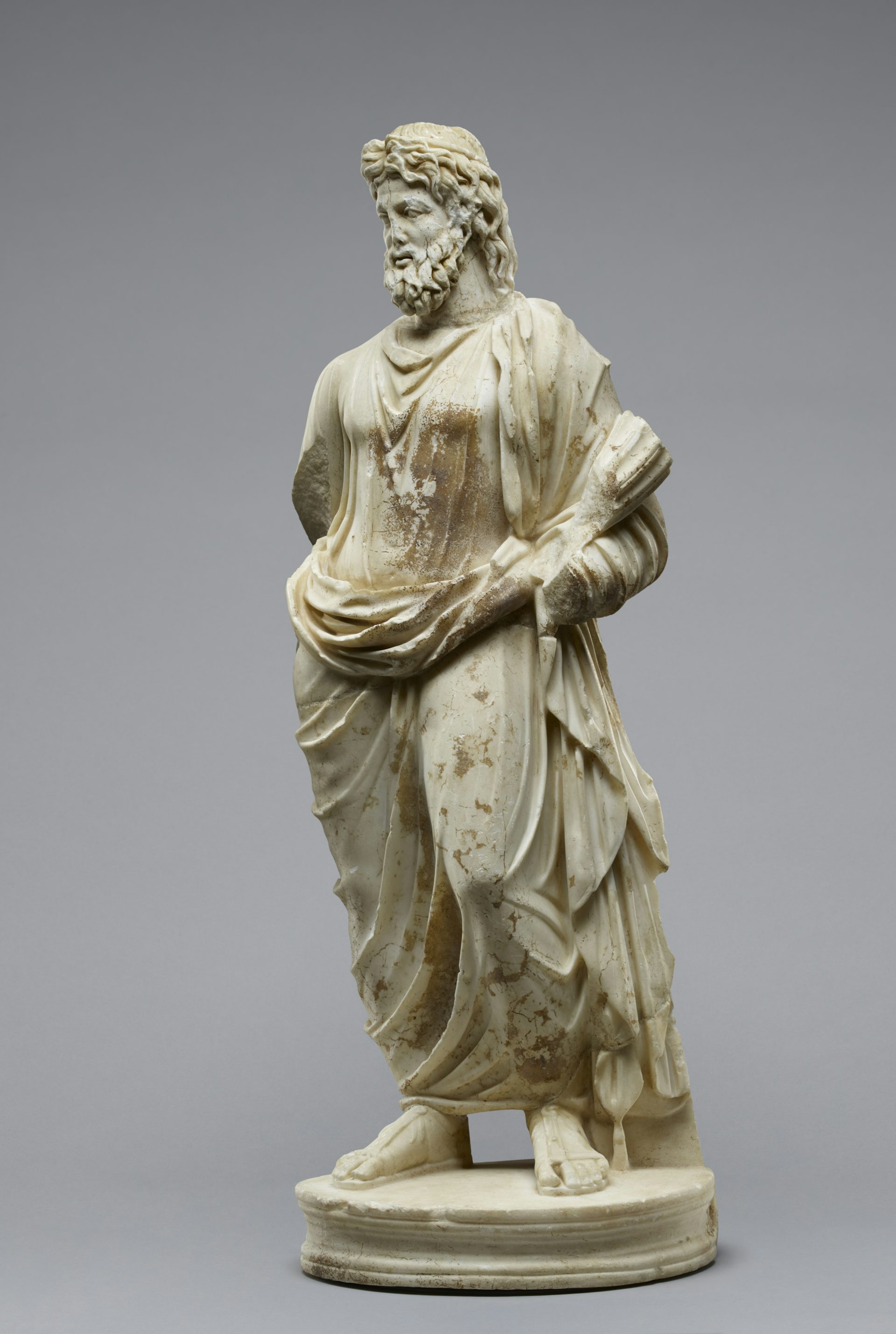
Statuette of Pluto (Roman Hades) holding a cornucopia. 1st century CE Roman copy of Greek original.
J. Paul Getty MuseumPublic DomainHades was so terrifying to the Greeks that he was almost never depicted in ancient art. In the artistic representations we do encounter, Hades appears as either a young man or with a dark beard. He is often seated on a throne with Cerberus, the three-headed dog, crouched menacingly at his side.
Hades could also be symbolized by a number of animals, such as snakes, roosters, or screech owls, as well as certain plants, such as the cypress, mint, and asphodel.
Family
According to the poet Hesiod, Hades was the first male child of the Titans Cronus and Rhea.[2] Like his first four brothers and sisters—Hestia, Demeter, Hera, and Poseidon—Hades was swallowed shortly after his birth by Cronus, the lord of the universe, who had received a prophecy that one of his children would overthrow him. Eventually, Hades and his siblings were rescued by Zeus, the youngest child of Cronus and Rhea, who forced Cronus to regurgitate the children he had swallowed and took the mantle of “ruler of the universe” for himself.
Hades’ bride and queen was Persephone, whom Hades had kidnapped, though she only lived with him for part of the year. Hades was sometimes said to have fathered several mythical figures, among them the Erinyes (also called “the Furies”), female spirits of vengeance and punishment;[3] Zagreus, a mysterious chthonic deity;[4] Melinoe, another chthonic deity;[5] and Macaria, an Underworld deity associated with the fortunate dead.[6]
Parents
Father
Mother
Siblings
Brothers
Sisters
Consorts
Wife
Children
Daughters
Son
- Erinyes (Furies)
- Melinoe
- Macaria
- Zagreus
Mythology
Hades and the Underworld
Led by the mighty Zeus, Hades and his siblings took part in the Titanomachy—a cataclysmic struggle between the old gods, the Titans, and the new gods, the Olympians. According to Homer’s Iliad, the victorious brothers—Zeus, Poseidon, and Hades—took advantage of their male privilege and distributed power among the gods and goddesses.
They also distributed power among themselves, drawing lots to determine their domains. Zeus drew the sky, Poseidon the seas and all waters, and Hades the gloomy Underworld buried deep within the earth.[7] Hades was generally thought to have selected the worst of the domains. While his realm was not necessarily a place of outright suffering or horrors, it was still bleak and lifeless. In the Odyssey, Achilles speaks to Odysseus in the Underworld, famously claiming:
Nay, seek not to speak soothingly to me of death, glorious Odysseus. I should choose, so I might live on earth, to serve as the hireling of another, of some portionless man whose livelihood was but small, rather than to be lord over all the dead that have perished.[8]
In the Underworld, Hades ruled over a minor pantheon of chthonic beings and built a palace called the House of Hades. There he lived with Persephone (for several months of the year) and his “guests,” the countless dead who had successfully made the journey to the Underworld.
Others were not so lucky. Those who failed to pay their toll to the ferryman Charon were left to wail on the far bank of the river Styx. Those who were judged to have lived wickedly, as well as those who had attempted to elude death and deprive Hades of their soul, were consigned to dreadful Tartarus, a region below Hades full of misery and torturous punishments.
One famous example of what awaited in Tartarus involved Sisyphus, a mortal king who had offended the gods somehow. According to the best-known version, Sisyphus had tricked Thanatos (the personification of death) by chaining him up when he came to claim his life.[9] For this deed, Hades cast Sisyphus into Tartarus and assigned him the impossible task of rolling a boulder to the top of a hill that he could never reach. Every time he had nearly reached the top, the boulder would roll back down.
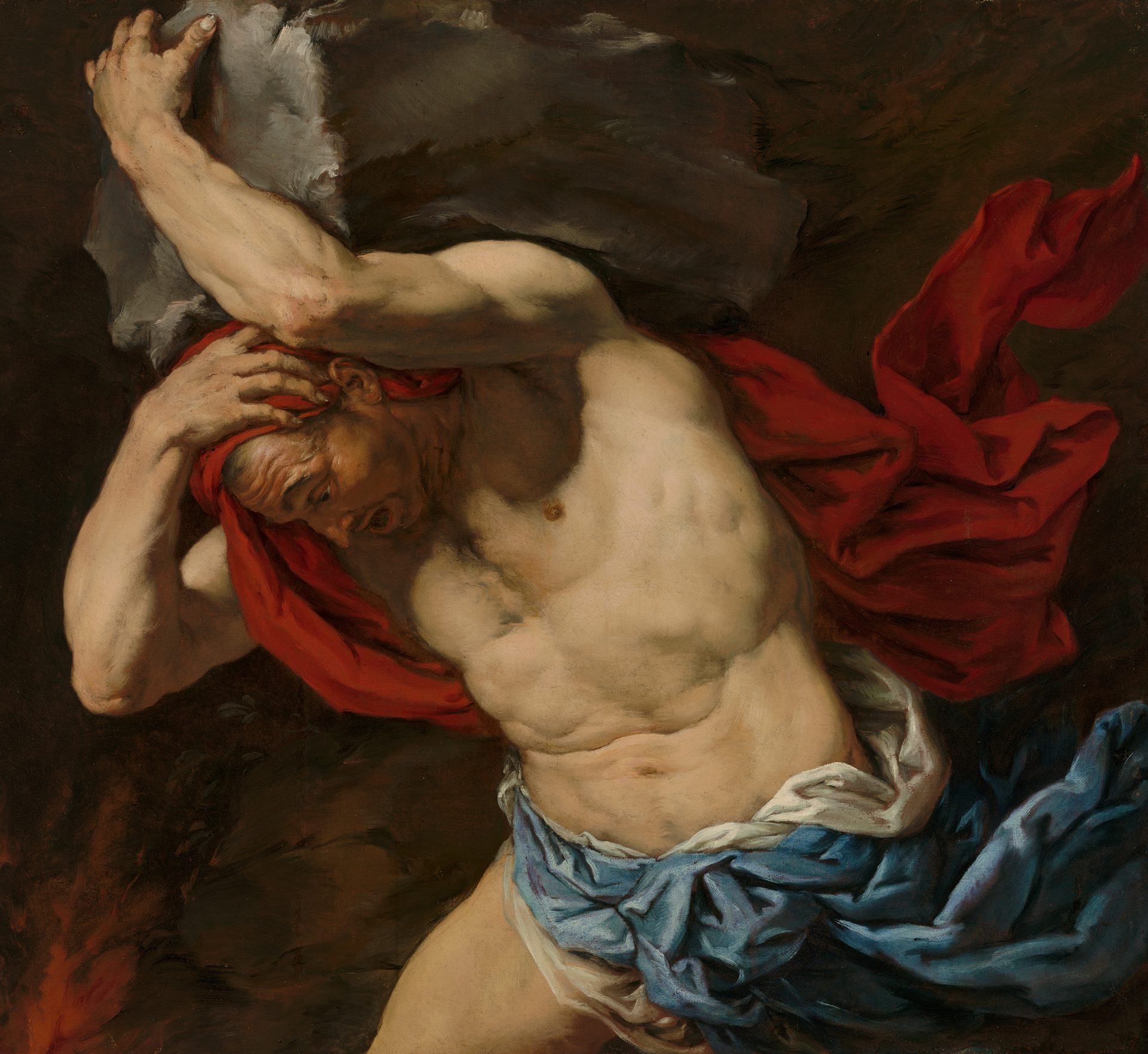
Sisyphus by Antonio Zanchi (ca. 1660–1665).
MauritshuisPublic DomainOriginally, this was the extent of the Greek Underworld: a dreary, gray field for the majority of the dead, with special punishments reserved for a handful of sinners in Tartarus. This is the Underworld that Odysseus visits in Book 11 of the Odyssey (one of the earliest examples of Greek literature).
Only in later periods of Greek history was the Underworld divided more clearly into three regions: one for the blessed dead, variously called Elysium or the Isles of the Blessed, which was reserved for only the greatest heroes and demigods; one for criminals and sinners who had offended the gods, called Tartarus; and one for everybody else, usually called the Fields of Asphodel or simply Hades.
Hades and Persephone
The central myth of Hades involved his abduction of Persephone. Hades was visiting earth (a rare occasion) when he noticed the beautiful Persephone, daughter of Zeus and Demeter, picking flowers and playing with her friends. Smitten, Hades swooped down on Persephone in his black chariot, seized the young goddess, and carried her away to the Underworld.
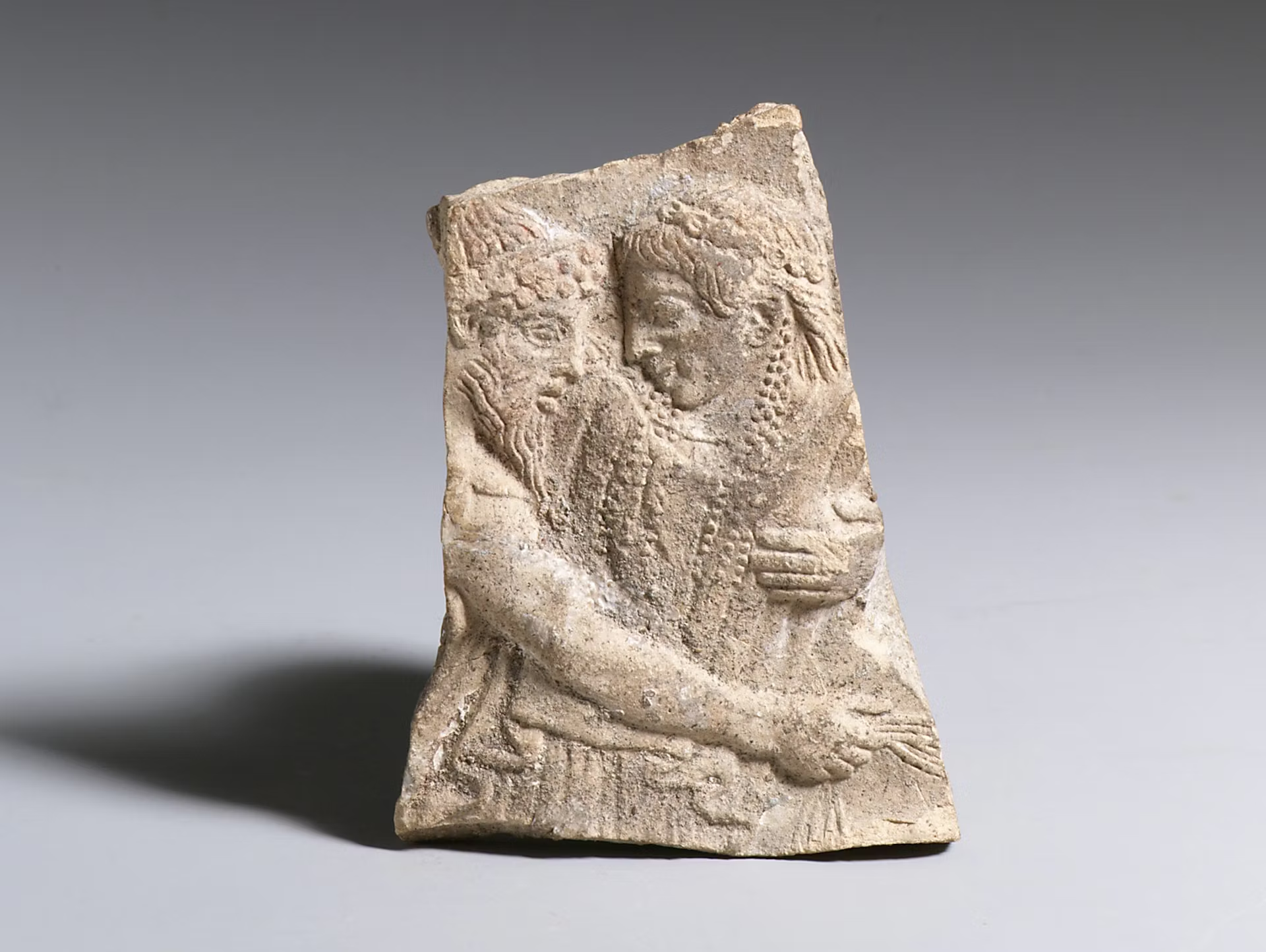
Fragment of a Greek votive relief showing Hades abducting Persephone (ca. 470 BCE).
Metropolitan Museum of ArtPublic DomainDemeter, the goddess of fertility and agriculture, searched far and wide for her missing daughter, but in vain. Her hunt eventually led her to Eleusis, where she withdrew from the world in a temple built in her honor. Demeter was so stricken with grief that she cursed the ground so that nothing would grow.
Seeing the damage and destruction wrought by Demeter’s grief, the other gods grew restless and appealed to Zeus to intervene. He eventually agreed to send Hermes to the Underworld to command Hades to release Persephone. The second Homeric Hymn captures Hades’ deceptively cooperative reaction:
[Hades], ruler over the dead, smiled grimly and obeyed the behest of Zeus the king. For he straightway urged wise Persephone, saying: “Go now, Persephone, to your dark-robed mother, go, and feel kindly in your heart towards me: be not so exceedingly cast down; for I shall be no unfitting husband for you among the deathless gods, that am own brother to father Zeus. And while you are here, you shall rule all that lives and moves and shall have the greatest rights among the deathless gods: those who defraud you and do not appease your power with offerings, reverently performing rites and paying fit gifts, shall be punished for evermore.”[10]
But Hades’ acquiescence came with a minor stipulation. If Persephone had refused all food while she was in the Underworld, he would allow her to go free. If she had eaten something, however, she would be forced to return to him during certain times of the year. During her time in Hades, Persephone had eaten a few pomegranate seeds. It was these seeds that would force her to return to the Underworld each year for either a third or half of the year (depending on the version).[11]
According to some interpretations, the time of Persephone’s absence from Demeter coincided with the most dire and life-threatening seasons—either the hot and dry Mediterranean summer, when plant life was endangered, or autumn/winter, when cold temperatures and frosts temporarily halted agricultural growth. The story of Persephone’s abduction became the central element of the Eleusinian Mysteries, the annual rites performed by followers of the cult of Demeter and Persephone.
Hades and the Heroes
While Hades was seldom a main character in mythological tales, he did appear in stories of heroes who journeyed to the Underworld.
Heracles
Perhaps most famously, Hades appeared in the mythos of Heracles. During his twelfth and final labor, Heracles was tasked with capturing Cerberus, the multi-headed hound that guarded the entrance to the Underworld. There were many different versions of this story, but the end result was always a victory for Heracles.
Hades appeared one other time in the mythos of Heracles. This time, the god of the dead went up against the strongman in a battle that took place at the Greek city of Pylos. This did not go well for Hades, who ended up shot through the shoulder by one of Heracles’ arrows. This obscure myth is known only from one brief mention in Book 5 of Homer’s Iliad.[12]
Theseus and Pirithous
Another story involved the two adventurers Theseus (the greatest Athenian hero and slayer of the Minotaur) and Pirithous, who conspired to kidnap Persephone from the Underworld. According to the most familiar version of the myth, as told in Apollodorus’ Epitome, Hades learned of the plot and invited the two to a grand banquet. When they sat down, they were instantly fastened to their chairs.[13]
In most traditions, Heracles eventually managed to rescue Theseus while he was passing through the Underworld for his final labor; but, try as he might, he could not free Pirithous, who was doomed to remain forever trapped because it had been his idea to abduct Persephone.[14]
Orpheus
Hades also played a central and tragic role in the story of Orpheus, the great musician. When Orpheus lost his wife Eurydice, he boldly decided to enter the Underworld to get her back. Armed with nothing but his mesmerizing music, Orpheus penetrated to the very depths of the Underworld. He even managed to melt the icy heart of Hades.

Orpheus Leading Eurydice from the Underworld by Jean-Baptiste-Camille Corot (1861).
Museum of Fine Arts, HoustonPublic DomainIn fact, the god of the dead was so captivated by Orpheus’ music that he allowed him to take Eurydice back with him to the world of the living, on one condition: Orpheus could not look back to make sure she was behind him until he was outside of the Underworld. But Orpheus disobeyed, and so lost Eurydice forever.
Worship
Hades, described by Homer as the “most hated by mortals of all gods,”[15] was not generally an object of worship by ancient Greeks. He had few followers or temples, though the Greeks did honor and offer sacrifices to him at funerals. During these rituals, the blood of the sacrificial beast was allowed to sink into the ground and appease the lord of the Underworld. As Hades was a chthonic god—that is, a god of the earth and Underworld—he only received black sacrificial victims.
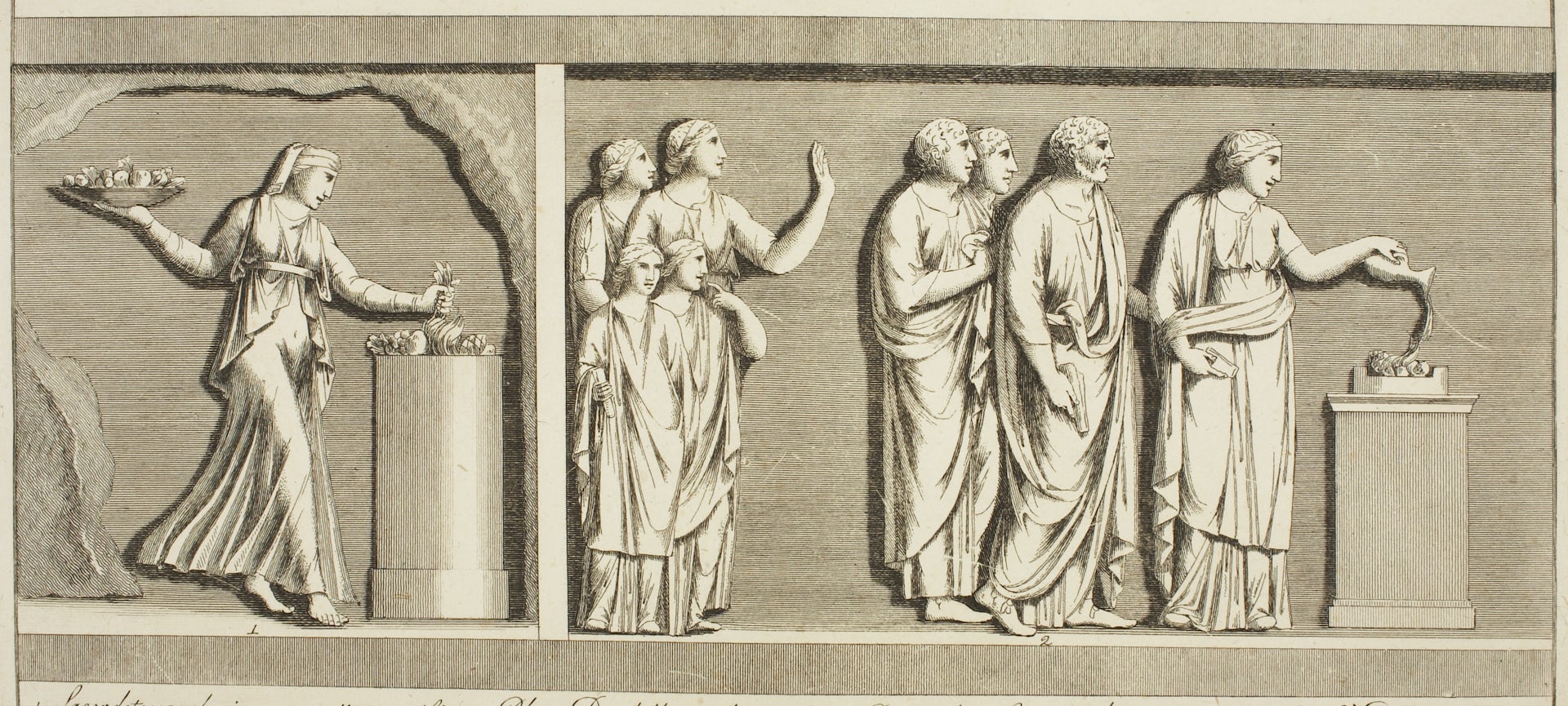
Priestess Offering to Hades: A Family Offering (after antique reliefs in Villa Mattei) by Lorenzo Roccheggiani (1804).
ThorvaldsenmuseumCC0In Greece, cult images of Hades appeared in a handful of temples, but he had almost no temples of his own. Perhaps his most important sacred site was the “Oracle of the Dead” in the northern Greek town of Thesprotia, said to be near one of the entrances to the Underworld. Here, worshippers would gather together to speak with their dead ancestors, seance-style.[16] Another important temple of Hades was located in Elis in the Peloponnese, but it was open only once a year.[17]
Hades had a few more temples outside of mainland Greece. He had another “Oracle of the Dead” at Cumae in Italy,[18] as well as sanctuaries in Acharaca[19] and Heriopolis[20] in Asia Minor.
Pop Culture
Though Hades has often appeared in popular culture, he is frequently depicted as conniving and evil, a portrayal at odds with his ancient persona. Hades is one of the antagonists in the 1981 film Clash of the Titans and its remakes. In Disney’s Hercules (1997), Hades’ character, voiced by James Woods, attempts to overthrow Zeus and the Olympians due to his resentment at being stuck in the dark Underworld.
Hades makes regular appearances in the book and film series Percy Jackson and the Olympians; he is portrayed in the films by Steve Coogan. Hades was also a fixture of the 1990s TV series Hercules: The Legendary Journeys and Xena: Warrior Princess.
In video games, Hades appears as a recurring character in the God of War series (the palace of Hades is a featured level in God of War III), as well as in Age of Mythology and Age of Empires.